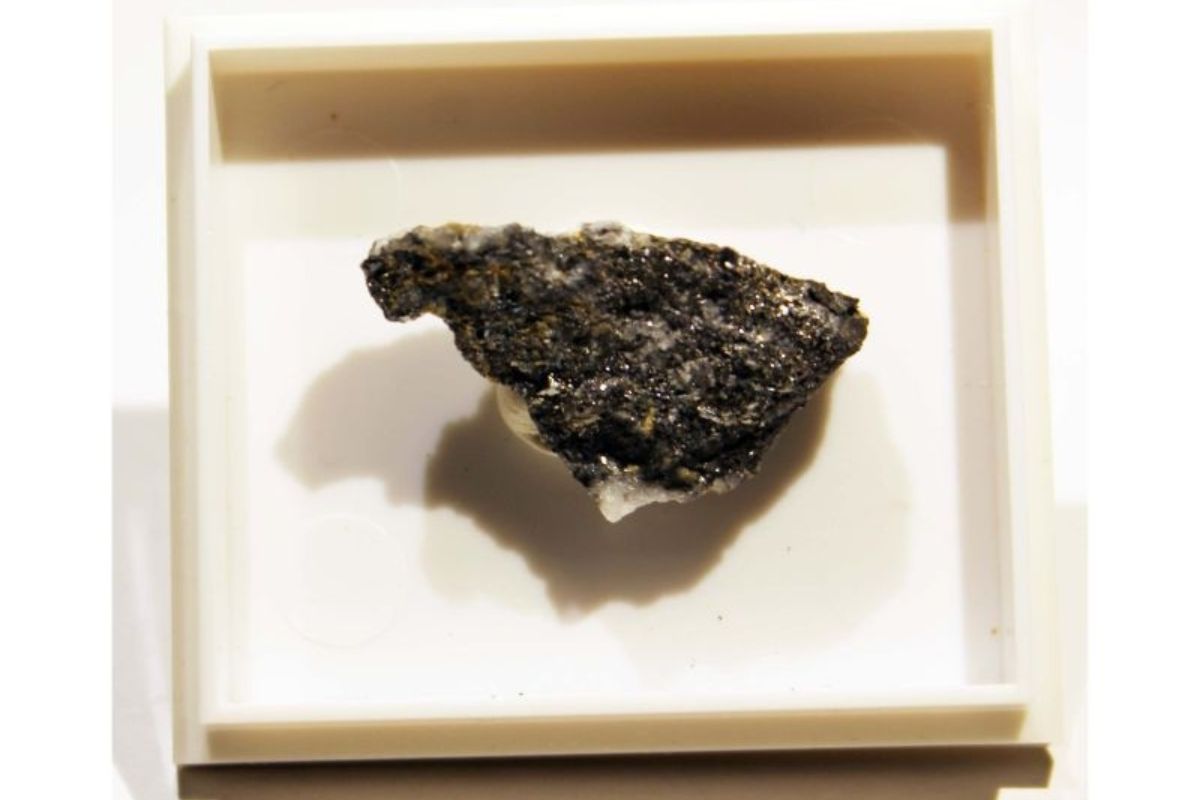
Playfairite is a rare mineral that has intrigued geologists and collectors alike. Named after the Scottish geologist John Playfair, this mineral boasts a unique combination of elements that make it stand out. But what exactly makes Playfairite so special? Is it the striking metallic luster, the complex crystal structure, or perhaps its fascinating formation process? In this blog post, we will uncover 25 facts about Playfairite that will not only satisfy your curiosity but also deepen your appreciation for this geological marvel. Whether you're a seasoned rock hound or just someone with a budding interest in minerals, these facts will provide a comprehensive look into the world of Playfairite. Get ready to be amazed by the wonders of this extraordinary mineral!
Key Takeaways:
- Playfairite is a rare, metallic mineral named after Scottish geologist John Playfair. It has a unique composition and is often found in Switzerland, Czech Republic, and the United States.
- While not widely used, Playfairite is prized by collectors for its rarity and aesthetic appeal. It is also studied by researchers and displayed in museums for educational purposes.
What is Playfairite?
Playfairite is a rare mineral that has intrigued geologists and mineral enthusiasts alike. Named after the Scottish geologist John Playfair, this mineral has a unique composition and fascinating properties. Here are some interesting facts about Playfairite that you might not know.
-
Playfairite is a sulfosalt mineral, which means it contains sulfur and a metal.
-
It was first discovered in 1966 in the Lengenbach Quarry, Switzerland.
-
The mineral is named after John Playfair, a Scottish geologist known for his work in the early 19th century.
-
Playfairite has a metallic luster, making it quite eye-catching.
-
Its color ranges from steel-gray to black.
Chemical Composition and Structure
Understanding the chemical composition and structure of Playfairite can provide insights into its unique properties and formation.
-
Playfairite's chemical formula is Pb16Sb18S45.
-
It belongs to the orthorhombic crystal system, which means its crystals are shaped like elongated rectangles.
-
The mineral is composed mainly of lead (Pb), antimony (Sb), and sulfur (S).
-
Playfairite crystals are often prismatic, meaning they have well-defined, elongated shapes.
-
It has a Mohs hardness of 3, making it relatively soft compared to other minerals.
Where Can You Find Playfairite?
Playfairite is not a common mineral, and its occurrences are limited to specific locations around the world.
-
The Lengenbach Quarry in Switzerland is the most famous locality for Playfairite.
-
It has also been found in the Czech Republic, specifically in the Příbram mining district.
-
Small amounts of Playfairite have been discovered in the United States, particularly in Colorado.
-
The mineral is often found in hydrothermal veins, which are cracks in rocks filled with mineral-rich water.
-
Collectors prize Playfairite specimens for their rarity and unique appearance.
Uses and Applications
While Playfairite is not widely used in industrial applications, it holds significant value for collectors and researchers.
-
Playfairite is primarily a collector's mineral due to its rarity and aesthetic appeal.
-
It is often studied by mineralogists to understand sulfosalt minerals better.
-
Some museums and educational institutions display Playfairite specimens to educate the public about rare minerals.
-
The mineral's unique properties make it a subject of interest in geological research.
-
Playfairite's metallic luster and distinct crystal shapes make it a popular choice for mineral displays.
Interesting Tidbits
Here are some additional fascinating facts about Playfairite that highlight its unique characteristics and history.
-
Playfairite is often associated with other rare minerals like bournonite and tetrahedrite.
-
The mineral's name was officially approved by the International Mineralogical Association in 1967.
-
Playfairite specimens can sometimes contain inclusions of other minerals, adding to their visual appeal.
-
The Lengenbach Quarry, where Playfairite was first discovered, is renowned for its rich diversity of rare minerals.
-
Despite its softness, Playfairite can form well-defined, sharp crystals that are highly sought after by collectors.
Final Thoughts on Playfairite
Playfairite, a rare mineral, captivates with its unique properties and fascinating history. Named after the Scottish scientist John Playfair, this mineral stands out due to its distinct crystal structure and metallic luster. Found primarily in hydrothermal veins, it often coexists with other minerals like pyrite and galena. Playfairite's rarity makes it a prized specimen for collectors and geologists alike. Its discovery in various locations worldwide highlights the diverse geological processes that create such minerals. Understanding Playfairite not only enriches our knowledge of Earth's mineral wealth but also underscores the importance of preserving these natural treasures. Whether you're a seasoned geologist or just curious about the natural world, Playfairite offers a glimpse into the intricate and beautiful world of minerals. Keep exploring and appreciating the wonders beneath our feet!
Frequently Asked Questions
Was this page helpful?
Our commitment to delivering trustworthy and engaging content is at the heart of what we do. Each fact on our site is contributed by real users like you, bringing a wealth of diverse insights and information. To ensure the highest standards of accuracy and reliability, our dedicated editors meticulously review each submission. This process guarantees that the facts we share are not only fascinating but also credible. Trust in our commitment to quality and authenticity as you explore and learn with us.
